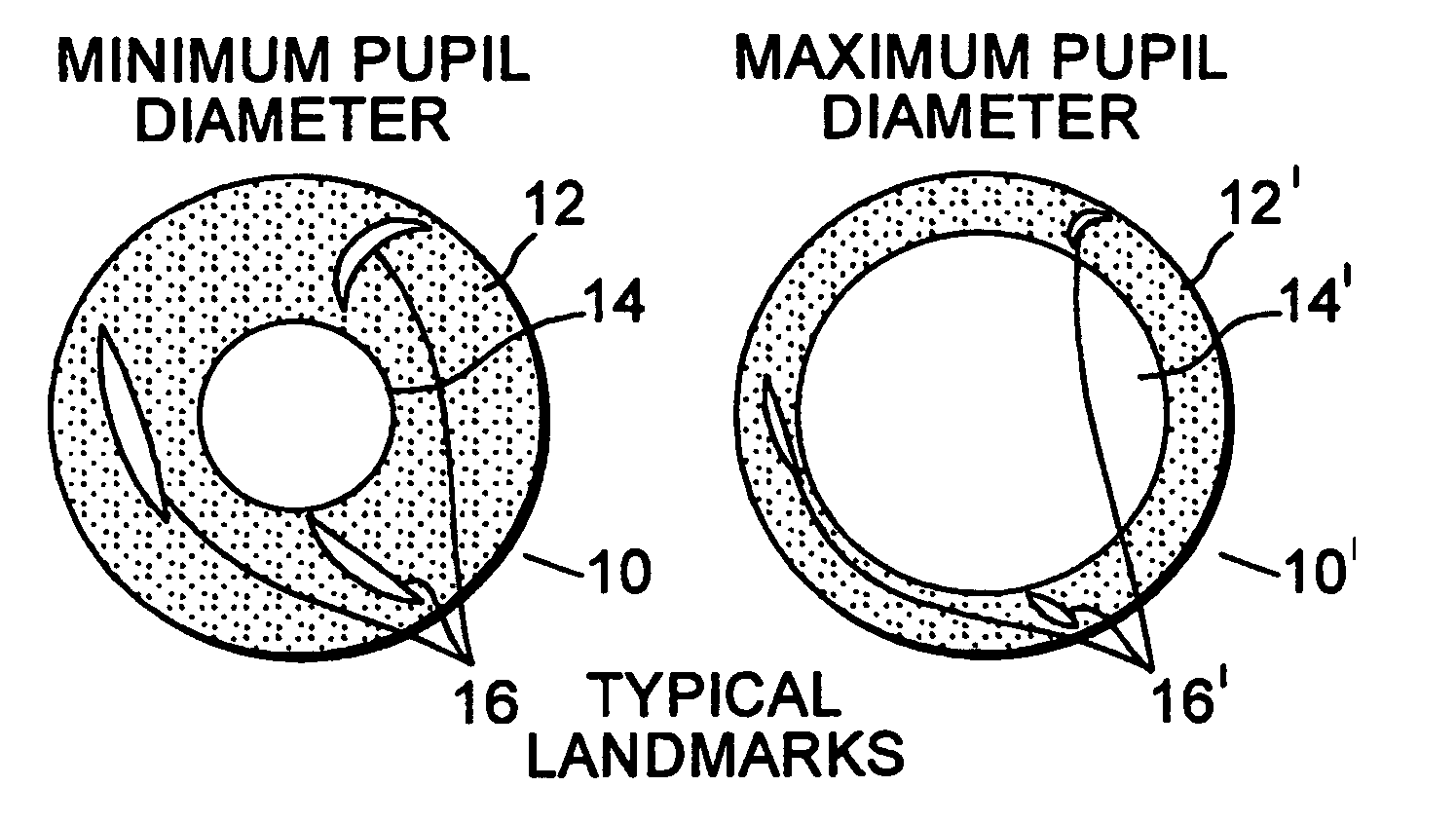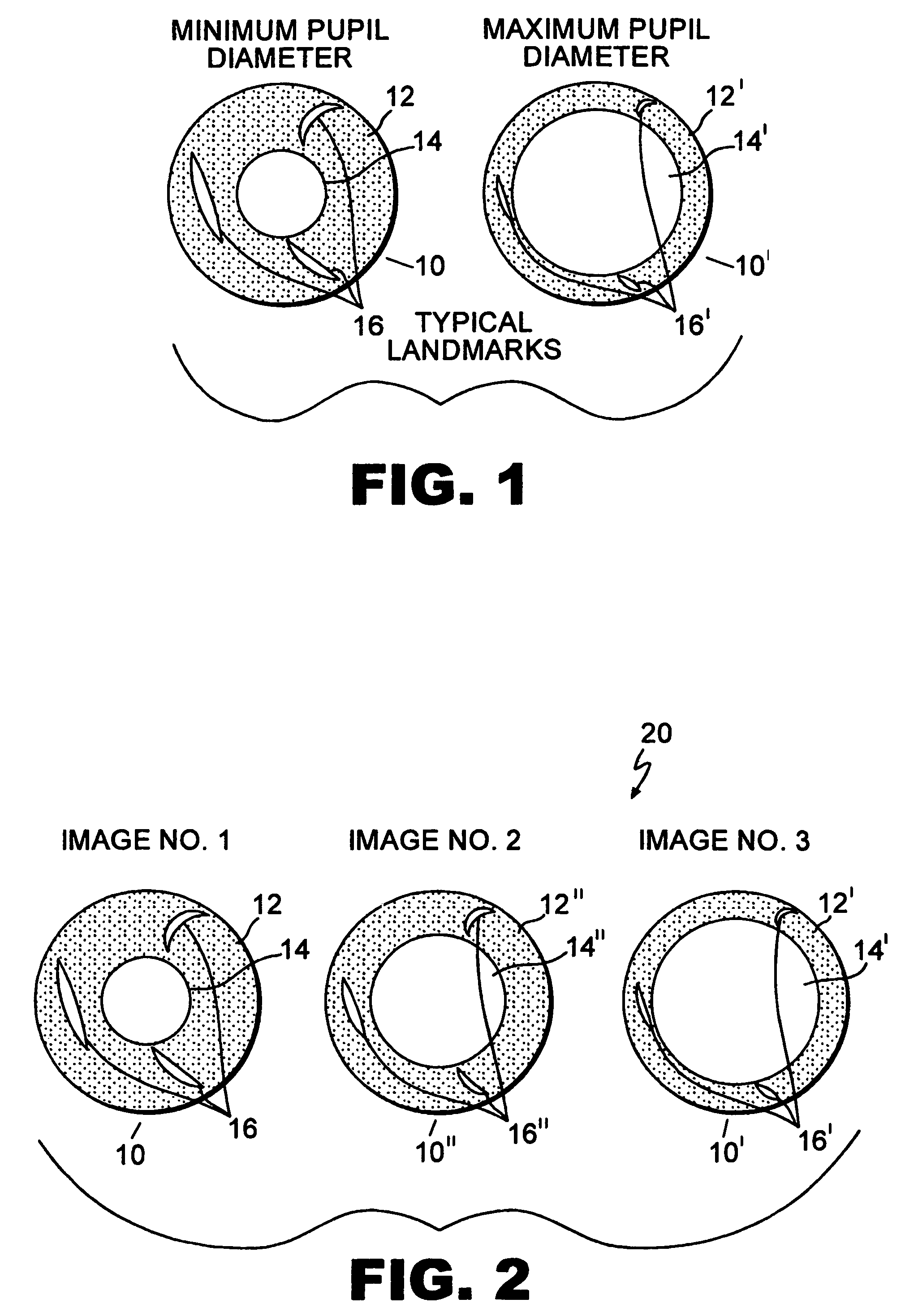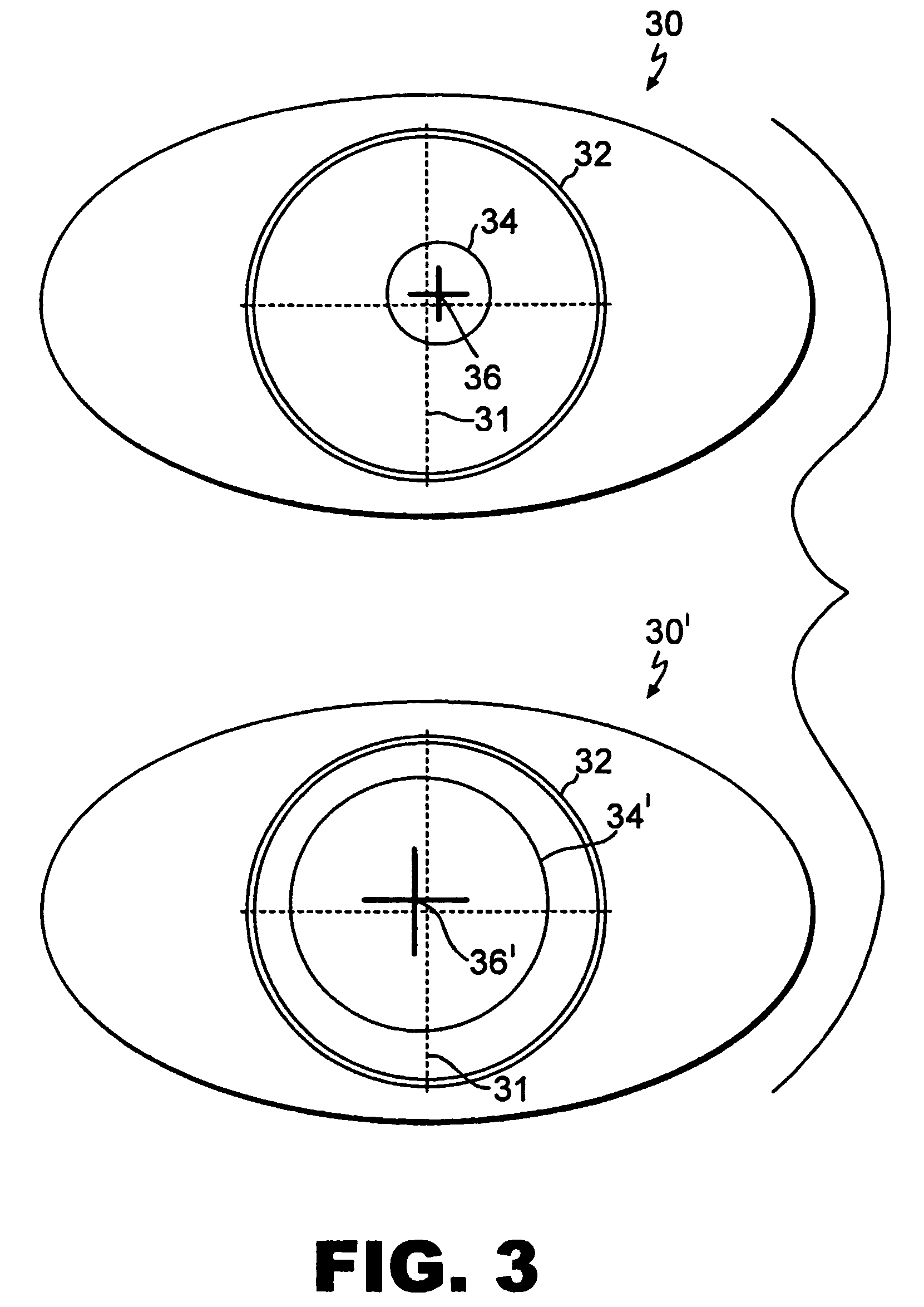Iris pattern recognition and alignment
a technology of iris pattern recognition and alignment, applied in the field of laser vision correction and laser eye surgery, can solve the problems of degrading vision quality, complication, and pupil constricting, and achieve the effect of accurate laser treatment and accurate positioning
- Summary
- Abstract
- Description
- Claims
- Application Information
AI Technical Summary
Benefits of technology
Problems solved by technology
Method used
Image
Examples
Embodiment Construction
[0021]While the present invention is described with reference to illustrative embodiments for particular applications, it should be understood that the present invention is not so limited. Those having ordinary skill in the art and access to the teachings provided herein will recognize additional modifications, applications, and embodiments within the scope thereof and additional fields in which the invention will be of significant utility without undue experimentation.
[0022]The invention is directed to methods and systems providing alignment between diagnostic images of the eye and treatment images of the eye that result in greater accuracy of the laser treatment and, therefore, greater patient satisfaction.
[0023]An embodiment of the invention is described below in accordance with FIGS. 1 and 2. Systems and devices are known which use iris pattern recognition for identifying eye structures and for aligning diagnostic and therapeutic images for eye surgery. For example, PCT / EP00 / 103...
PUM
 Login to View More
Login to View More Abstract
Description
Claims
Application Information
 Login to View More
Login to View More - R&D
- Intellectual Property
- Life Sciences
- Materials
- Tech Scout
- Unparalleled Data Quality
- Higher Quality Content
- 60% Fewer Hallucinations
Browse by: Latest US Patents, China's latest patents, Technical Efficacy Thesaurus, Application Domain, Technology Topic, Popular Technical Reports.
© 2025 PatSnap. All rights reserved.Legal|Privacy policy|Modern Slavery Act Transparency Statement|Sitemap|About US| Contact US: help@patsnap.com



